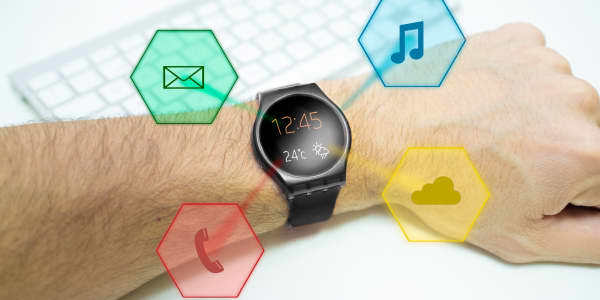Matthias Galica, a technology entrepreneur in Santa Monica, Calif., used to receive about 150 to 200 daily email messages. Now he sees about 15 to 20 messages a day in his inbox.
The shift has been freeing for Galica, who uses Sanebox, an email filtering tool, and estimates that he now has about two to three more hours in his day.
"I didn't realize to what extent the little distractions added up," he said.
Of course, his is a common refrain. Most of us have a love-hate relationship with email. It helps us keep in touch, manage large amounts of information and speed communication. But email has also become a crazy-making source of distraction from other important matters.
It's a Big Data problem on a personal level. But now several new tools are looking to manage the deluge of email and do a better job mining it for valuable information — and in the process, make people more efficient at their jobs.
(Read more: )
"There's so much data locked in your email," such as digital receipts, social information and documents, said Joshua Baer, founder of OtherInbox, now part of ReturnPath, which develops email technology.
Baer is also a popular angel investor in email startups. "How do you unlock this information and use it to help people make better decisions?"
The new technology has appeared as the flow of email continues to swell. Employees send and receive an estimated 110 emails a day, according to the Radicati Group, a technology market research firm. That's expected to increase to 125 by 2015.
Last summer, a McKinsey Global Institute report calculated that employees spend about 28 percent of their time managing email, among the least productive and time-consuming parts of their day.
And though people may not respond to a particular message, just the notification and interruption of incoming email takes away time. In fact, it takes about one and a half minutes to read and recover from reading an email, according to a study in association with Loughborough University in the United Kingdom.
"The sneaky thing about email is the stuff that isn't spam but all these notifications and newsletters and the things you subscribe to," said Galica, founder and CEO of mobile website builder ShareSquare. "You're interested in it most of the time, but that's grown so much that it has really hurt a normal person's ability to prioritize what they should focus on in a given day."
With Sanebox, most of Galica's email is automatically filtered into a separate folder. Sanebox's algorithm learns to separate the messages that aren't that important, such as a Twitter notification, and the ones that matter most, such as a response from a potential customer. During his lunch break or downtime, Galica scans his Sanebox folder, reading and processing those messages in bulk.
"People are drowning in their email," said Dmitri Leonov, Sanebox's vice president of growth. "The volume of email keeps growing, but there are only 24 hours in a day. Not all email is created equal. Some are important, and deserve to interrupt your day. Others can wait and be processed in bulk."
Sanebox, he added, estimates that about 60 percent of a person's inbox is filled with not-so-pressing messages.
Another startup, AwayFind, also encourages people to stop checking their inbox so frequently. Instead, it figures out critical messages, such as the ones from a boss or client, and sends an alert via a text message or phone call when an email arrives and needs a response right away.
To get a better handle on email, ToutApp tracks a person's messages and provides statistics and data on them, such as how many times an email was viewed, whether an important message was opened or if the recipient clicked on a link.
(Read more: Five Things to Consider Before Embracing the Cloud)
And San Francisco's Rapportive can be incorporated into an inbox to get a deeper look at a person's contacts, displaying information such as a LinkedIn connection for a sender.
Popular email providers, such as Gmail, AOL and Microsoft Outlook have also incorporated their own tools into their services, such as Gmail's priority inbox, which flags and separates important messages.
Such technology is a good first step to helping people manage email overload, said Gloria Mark, a professor at the University of California, Irvine who researches human computer interaction. But it still isn't enough.
In a recent study, Mark and her team cut off email access to a group of information workers at an East Coast corporation for a week. Using heart monitors and other sensors, they found that employees who had been cut off from email multitasked less, could focus for longer periods of time and felt less stressed.
The study isn't encouraging people to quit email, she said. Instead, change is needed: Email should be used more selectively, and businesses should consider policies that help their employees staunch the unending flow of messages.
"People who send email should not have an expectation that they get instantaneous answers," she said. "We have to change the social norms and expectations around email."




